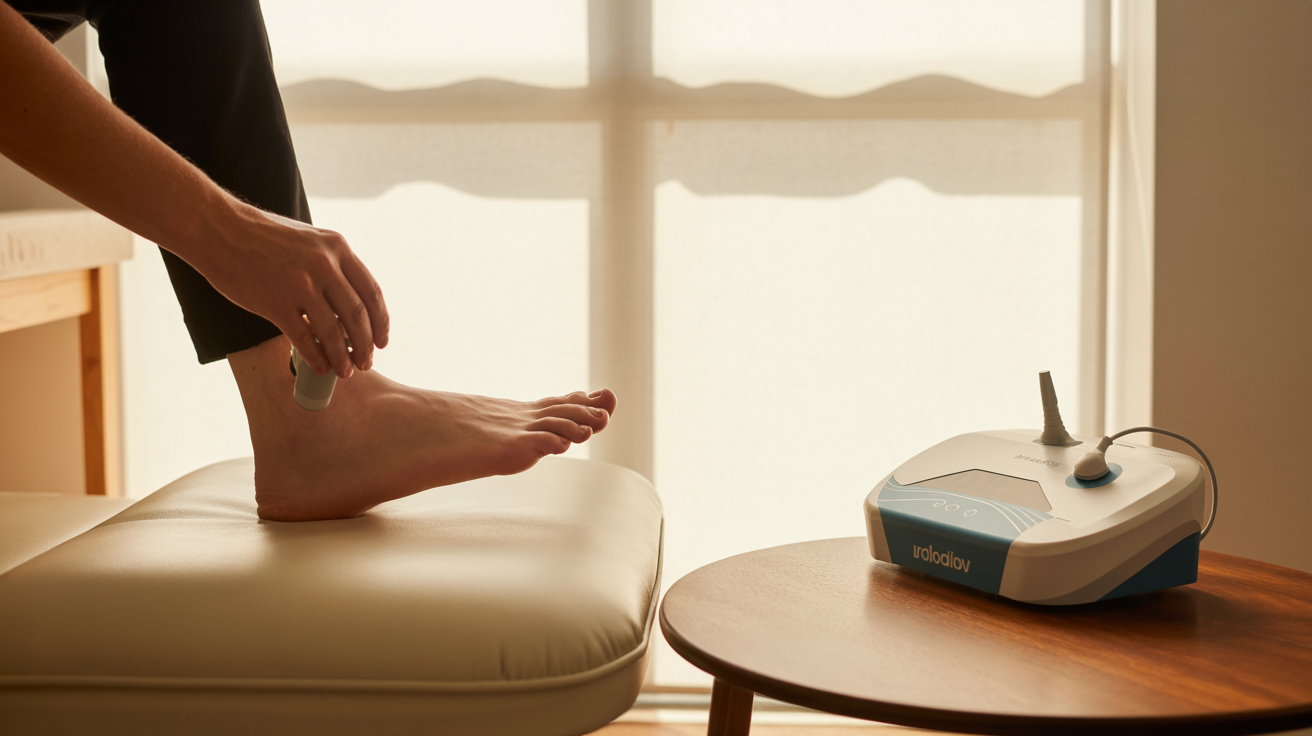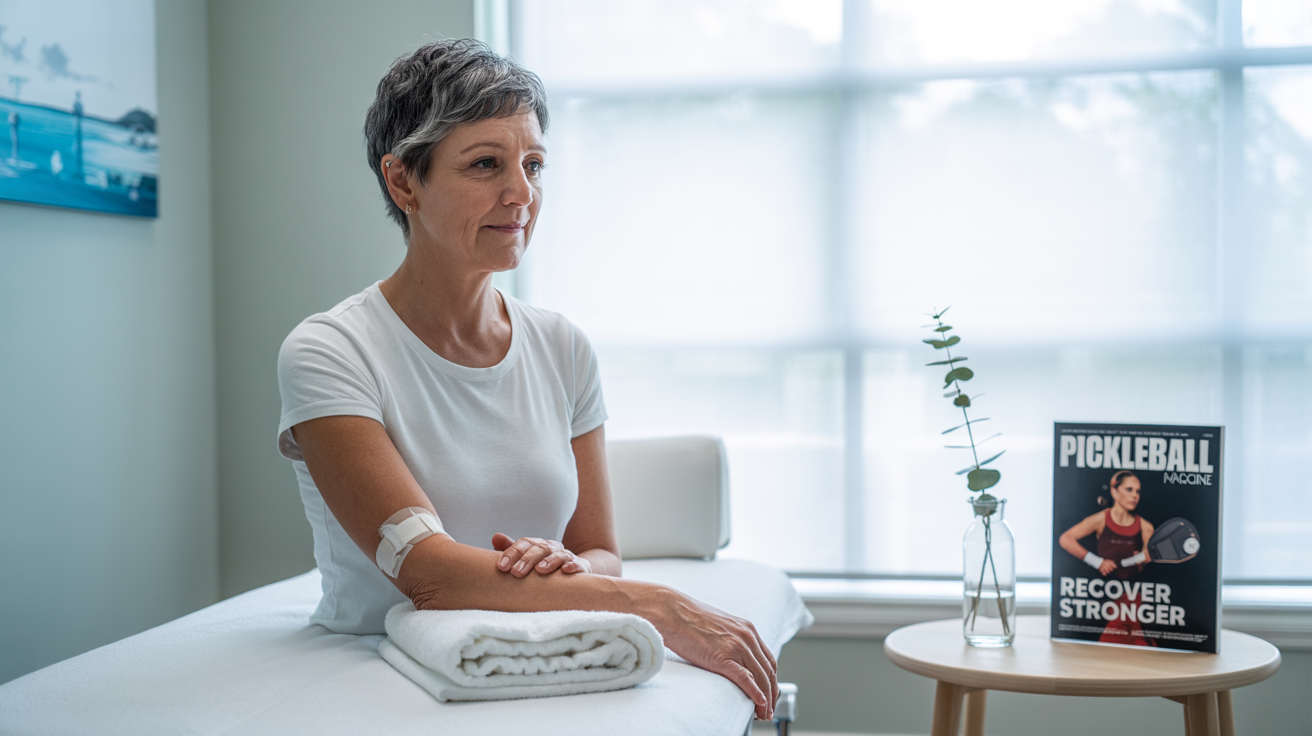Introduction: Understanding Shockwave Therapy for Plantar Fasciitis
Does that sharp, burning heel pain greet you first thing every morning? If so, you’re in good company. Plantar fasciitis is notoriously stubborn—lingering despite days of rest, ice packs, or endless stretching routines. For many, it turns daily life into a juggling act: skipping sunrise runs, dreading long walks, or struggling to simply enjoy being on your feet.
In plain terms, plantar fasciitis means irritation of the thick band running along the bottom of your foot (the “plantar fascia”), which is vital for supporting your foot’s arch. It’s the #1 culprit behind heel pain, especially if you’re active, on your feet all day, or chasing athletic ambitions. What’s worse? The pain isn’t shy about overstaying its welcome—sometimes dragging on for months or even longer, making everyday activities feel like an uphill climb.
Surprisingly, up to one in ten people will develop plantar fasciitis at some point. Traditional fixes—think physio, rest, and special shoes—can stretch out for 6 to 18 months before finding true relief.[2][4]
But here’s the exciting part: Shockwave therapy (using either “radial” or “focal” acoustic waves) is shaking up the story with faster, more lasting results. Let’s break down how it works—and why so many are turning to this innovative, science-backed option for real healing and a happier stride.
What is Shockwave Therapy? How Does It Work?
Shockwave therapy is a breakthrough, non-surgical treatment designed to help stubborn injuries heal—including that nagging plantar fasciitis. It sends sound wave pulses (think: tiny, powerful vibrations) into your tender heel tissue. These waves encourage your body to:
- Kickstart new tissue repair
- Grow fresh blood vessels for better healing
- Reduce and control pain at its source
Unlike injections or surgery, there are no cuts and no downtime needed. You just sit back as a handheld device gently delivers the waves to your heel—no scary needles, no anesthesia, and no weeks spent hobbling after treatment.
What Makes Shockwave Therapy Unique?
Here’s why shockwave therapy is turning heads:
- It jumpstarts true healing, not just temporary pain relief.
- It gets to the root cause—fixing stressed, damaged tissue instead of just numbing pain.
- Clinical studies show pain drops and mobility improves, sometimes after just a few sessions.
What Happens During a Typical Session?
- Preparation: You’ll kick back with your foot exposed. A little ultrasound gel gets applied to help the waves do their job.
- The Treatment: The handheld tool delivers pulses—it usually feels like strong tapping or vibrating local pressure. Radial therapy is softer; focused therapy feels sharper but is over quickly.
- Session Length: Most appointments wrap up in 15–20 minutes.
Patient success is remarkable: In studies, average pain levels drop dramatically—from 7+ out of 10 to under 1—within a few months. Up to 90% of patients report meaningful relief just three months in.[1][5] Imagine what that could mean for your daily routine!
Radial Shockwave Therapy: How It Works and Why Choose It
Radial shockwave therapy (r-ESWT) spreads gentle, energetic waves out from the device’s tip, covering a wide area at a shallower depth (usually up to 3–4 cm). Think of it as a “broad-strokes” approach. It’s perfect if your pain is spread out or you want to ease into therapy with minimal discomfort.
Ideal For:
- Mild to moderate plantar fasciitis
- Heels with widespread or generalized pain
- People who are sensitive to pain or brand new to shockwave therapy
What Will You Feel?
Most describe the sensation as light tapping or a deep vibration—not exactly spa-like, but easy to handle. Since the energy isn’t as intense or deep, there’s very little soreness afterwards. You’ll likely be back to your regular routine within a couple of days.
What Do the Results Say?
- Typical treatment plans: 3–10 sessions
- Studies report pain scores plummeting—from 7.5 down to below 1 after three months[5]
- Noticeable boosts in foot function—and fast symptom relief
- Better comfort: Patients say radial therapy is gentler than the focused version[4][6]
If you’re after a treatment that balances effectiveness and comfort, radial shockwave is a top pick.
Focal Shockwave Therapy: When Intensity Makes the Difference
Focal (focused) shockwave therapy (f-ESWT) dials up the energy—a laser-like approach that hones in on deep, stubborn trouble spots. If your fascia pain is chronic or stuck in one annoying spot, this treatment penetrates further beneath the surface to target what’s really holding you back.
The Right Fit For:
- Severe or long-standing plantar fasciitis—especially after other treatments fall short
- Localized heel pain that just won’t budge
- Anyone needing precise, powerful healing deep in the tissue
What Should You Expect?
The process is nearly identical to radial therapy, but expect a sharper pulse or a brief jolt. Some need a bit more energy to get the job done, but discomfort fades quickly.
Clinical Benefits
- Focused shockwaves reach over 3–4 cm deep, targeting hard-to-reach trouble spots
- Superior results in persistent or chronic cases
- Several studies suggest slightly better, longer-lasting pain relief than with radial therapy—especially at the three-month mark[1][3][7]
While focal therapy can be more intense, it often delivers when nothing else has.
Radial vs. Focal Shockwave: Which One’s Right for You?
| Feature | Radial Shockwave (r-ESWT) | Focal Shockwave (f-ESWT) |
|---|---|---|
| Depth | 3–4 cm, broad/superficial area | Deeper (beyond 4 cm), pinpoint |
| Best For | Mild/moderate, widespread pain | Severe/chronic, local pain |
| Comfort | Typically gentler and well-tolerated | Sharper but brief discomfort |
| Effectiveness | High success, fast relief | Slight edge for tough cases |
| Sessions | 3–10, usually weekly | 3–6, often higher intensity |
Key Takeaways:
- Both are safe, proven, and non-invasive options.
- When pain is deep or has lingered a long time, focal therapy may win out—but both bring powerful results.
- For a gentle start or wider-area pain, radial therapy shines.
Side-by-side studies find minimal difference in overall effect, but focused therapy’s deeper reach often means longer-lasting relief for the toughest cases.[1][3][4] In the end, the choice is personal: think comfort, convenience, and your unique heel pain.
What to Expect: Your Shockwave Therapy Experience
Before You Begin
- Dress comfy, and no special prep is needed.
- Chat with your clinician about your symptoms and medical history so they can choose the best option for your needs.
The Treatment Session
- An ultrasound gel gets applied for smooth sound wave delivery.
- You’ll feel tapping or strong pulses—some discomfort is normal, but it’s usually very manageable.
- Each session wraps up in 15–20 minutes.
Aftercare & Recovery
- You may notice mild soreness, redness, or swelling—it’s usually gone within 1–2 days.
- Avoid intense exercise or running for 2–3 days (gentle walking and stretching are just fine!)
- Most start to feel better within days, with maximum benefit building over weeks up to three months.
Safety, Risks & Satisfaction
- Shockwave therapy is considered exceptionally safe.
- Typical side effects—mild pain, redness, or swelling—are short-lived.
- Over 80% of patients see major improvements and say they’d gladly repeat the process.[1][4][5]
Conclusion: Take Your First Confident Step Toward Relief
Has persistent heel pain been slowing you down? Shockwave therapy—both radial and focal—offers a science-backed shortcut to real, lasting relief. Whether you prefer a gentle, patient-friendly approach or require a high-powered solution for relentless plantar fasciitis, there’s a shockwave option to fit your needs.
But the best way to find out what’s right for you? Schedule a one-on-one assessment. Your pain, history, and goals are uniquely yours—and your treatment plan should be too.
Ready to leave heel pain behind?
Book your consultation or first treatment with Regenerate Physiotherapy and Shockwave now!
Or get in touch at 780-705-5774 or team@regeneratephysio.ca.
Your comeback starts with a single click or call—let’s get you back on your feet, feeling your best!




